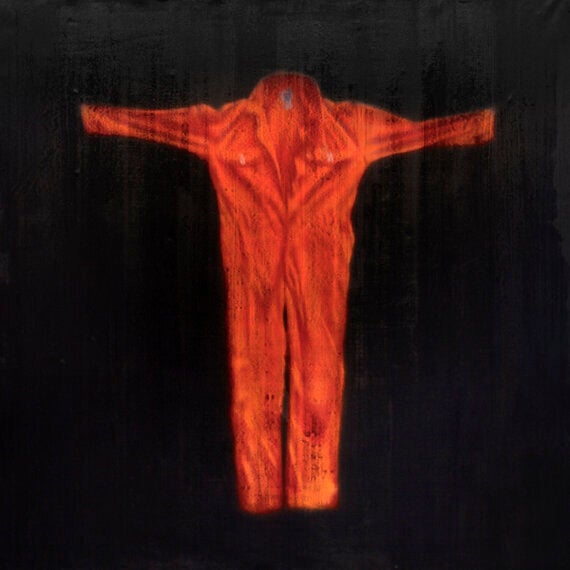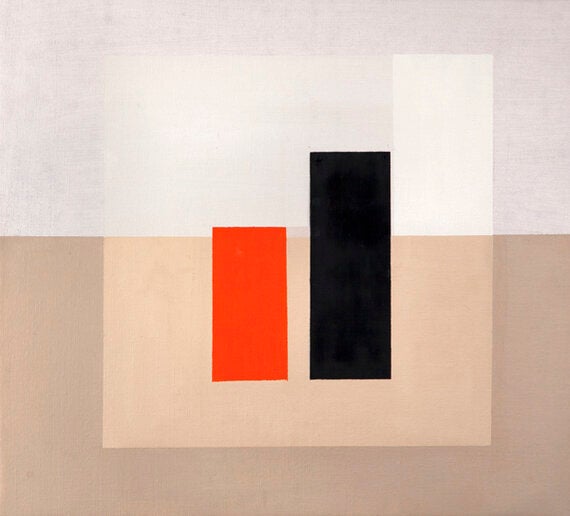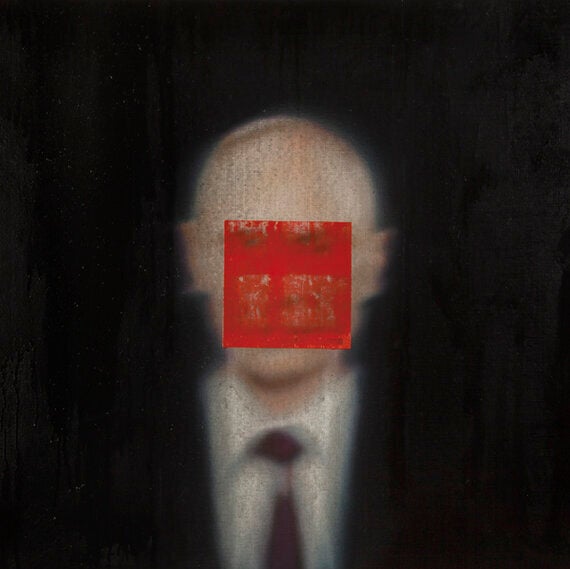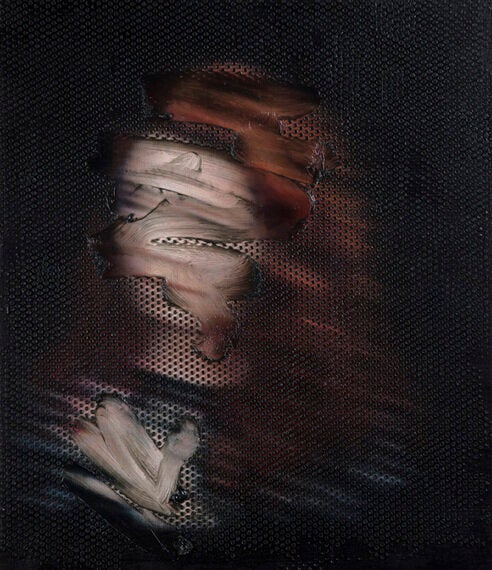John Keane may have only been an official war artist for a matter of days when he was commissioned by the Imperial War Museum to record images from the Gulf War of August 1990. Yet, war, conflict and power have remained constant fascinations and resultant themes of his paintings ever since.
A child of the 1950s, both his parents were deeply affected by World War II. His father became a prisoner of the Japanese with all the horrors that implies, while his mother lost her first husband to fighting in Normandy.
Keane came of age in the '60s and absorbed the anti-war zeitgeist that existed at that time, boosted by the daily exposure to the horrors and tragedies of the war in Vietnam. The political instability of the 1970s in turn politicised his art.
"For me, it was trying to investigate for myself why people did resort to the violence of warfare and aggression, what the motivation was for that and indeed how might I respond in a situation like that."
Such questions and themes can be viewed in no less than two current exhibitions of his work in London. The Flowers Gallery's Hoxton branch is hosting a Keane retrospective entitled The Wisdom of Hindsight. This presents a selection of works based on conflicts in the Gulf, in Israel and Palestine and incorporating those inspired by images from the so-called War on Terror including prisoners held in Guantanamo Bay.
It's the motif of the orange jumpsuit worn by Guantanamo's detainees that leads seamlessly on to a second exhibition entitled Speaking Power to Truth at Flowers Gallery's Mayfair branch in Cork Street where I caught up with the artist.

Jump (above) using oil on linen depicts the clever way in which the terror group ISIS/ISIL has subverted the jumpsuit image by dressing their own victims in this theatrical-like costume, thereby throwing it back into the face of the United States.
The crucifixion pose of the empty, anonymous suit is resonant not only of one of the group's execution methods but also for the way religion is used for the justification of unspeakable acts and contempt for human life.
The lack of detail and blurred nature of the painting gives it a universality. Christian ideas of martyrdom and sacrifice have been perverted by jihadi and other forces. The other two paintings in the Jump series show the same suit in a kneeling, submissive pose, the other in a prostrate, crumpled position. They make for chilling viewing.

The same can be said of the Mondrian-like abstract Distillation of Terror (above) in which the ominous, black Jihadi John-like symbol towers above its kneeling orange victim against the backdrop of the desert hue.
"I wanted to address the sinister theatricality of the imagery without including gruesome or voyeuristic viscera. Transforming the specific into the archetypal allowed me to engage with the picture more, not less."

The themes of Speaking Power to Truth are not confined to war but are also concerned with power. Vladamir Putin is the subject of three paintings, each in various degrees of distortion. Red Square (above), a nod to Malevich, suggests that Putin's rule harks back to the authoritarianism of the Tsars and the Soviet era.
"It's about addressing figures of our time who exert power, and for me as an artist who has precious little power, it's a way of somehow clawing back something for myself in that I can play with the image, I can manipulate it, I can do what I want with it - that's my rather feeble redress."

Rupert Murdoch is given a similar treatment in three pictures, as is his apparatchik, Rebekah Brooks. Pictures of Innocence 1 (above) shows the unmistakeable outline of the redheaded former newspaper editor with face smeared. The image is defined by black dots recalling the Ben-Day newspaper printing process. The irony of the painting's title reflects Keane's astonishment that she emerged not guilty at her trial for alleged phone-hacking.
War predominates at the exhibition though, and it reflects the sad fact that the Gulf War which John Keane was witness to some 25 years ago was but the opening salvo in a conflict which has spread within the Middle East and has seen tragic outbreaks in cities across Europe. I wondered what his fascination with war had taught him about the nature of conflict.
"It's about fear and insecurity and there's nothing quite like pre-empting that by being aggressive. I think violence tends to be a product of fear of otherness, fear of different tribes, religions, nations and so on and I guess that it is always about using self-defence as a justification."
The Wisdom of Hindsight is showing at the Flowers Gallery, 82 Kingsland Road, London E2 8DP
while Speaking Power to Truth is at the Flowers Gallery, 21 Cork Street, London W1S 3LZ. Both run until 27 June.
All images are courtesy of the artist and Flowers Gallery.